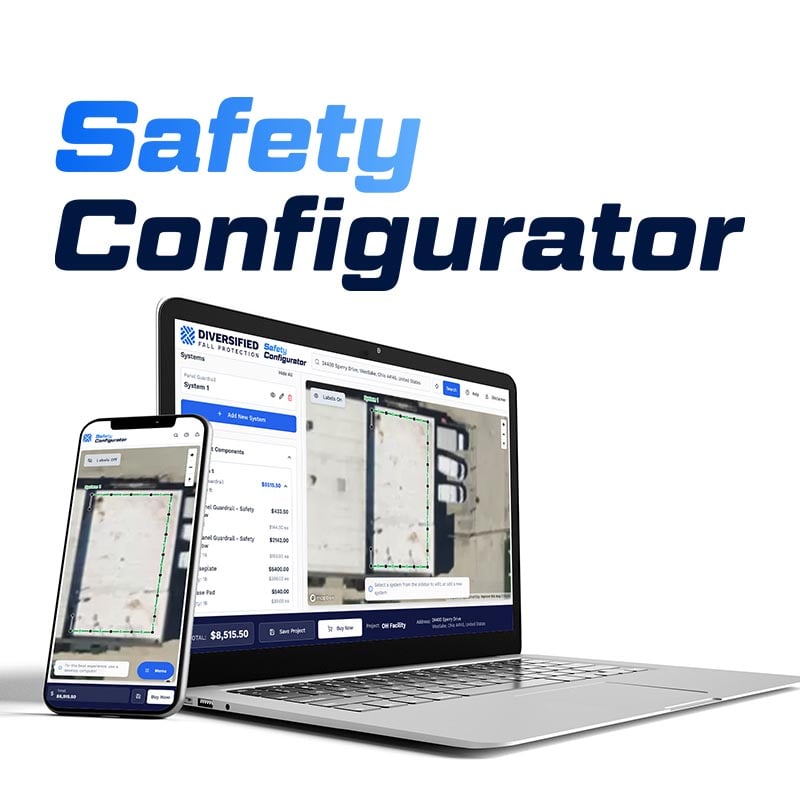Fall Protection Harness PPE: When Is Is Time To Replace?
OSHA regulations require employers to provide workers with fall protection personal protective equipment (PPE) in settings where they work or walk on elevated surfaces. PPE works in one of two ways. As a fall arrest system, PPE stops workers from hitting the ground or another obstruction after falls. As a fall restraint system, sometimes referred to as a travel restraint system, PPE uses a tethering device/system to keep workers from getting too close to unprotected leading edges.
A common type of PPE is the safety harness, which is combined with some other fall protection element like a shock absorbing lanyard or a self-retracting lifeline. Harnesses come in varying degrees of sophistication, depending on the use. An oil rig worker who spends all day working hundreds of feet up will use a full body harness designed to arrest a more severe free fall. For more limited fall hazards, where there is no danger of a vertical free fall, a chest harness might be used. (Body belts cannot be used as a fall arrest system due to the risk of internal injuries and asphyxiation.)
There is some difference between industry standard practice and OSHA regulations regarding safety harnesses that have been involved in a fall, or in OSHA parlance, PPE that has been “subjected to impact loading.” It is industry standard practice to remove from use and destroy all harnesses involved in a fall. Many fall protection companies recommend cutting up harnesses that have been deployed during a fall, which in turn removes the temptation to re-use potentially unsafe PPE.
“If you’ve fallen, the harness has served its purpose,” says Ryan Spikowski, Southwest Regional Manager at Diversified Fall Protection.
This practice is more stringent than OSHA’s guidance on the subject, which says that such items should be “immediately removed from service and shall not be used again for employee protection unless inspected and determined by a competent person to be undamaged and suitable for reuse.”
Safety harnesses are made with a variety of built-in fall arrest indicators, such as a red fabric lining that becomes exposed during the stress of a fall, which make it easy to determine if the PPE needs to be removed from use. Unfortunately, we do see harnesses still in use despite clearly having been in a fall. This often happens when workers do not report the falls, fearing they may be cited for a violation, reprimanded, or have wages cut as a result of an accident.
If a fall has not occurred and the harness passes routine inspections, the PPE can be used for the period of time determined by the manufacturer. The useable lifespan is often indicated on the harness label.
In addition to normal wear and tear, other factors can degrade the harness’ hardware and material. Exposure to daylight, fumes, or moisture can all contribute to the breakdown of the harness’ nylon fibers. Workers should inspect their safety harnesses before each use, looking at the belts and rings, D-rings and D-ring metal wear pads, attachments, rivets, webbing, the tongue and friction buckles and their frames, bars and rollers.
Harnesses also need to be routinely inspected by what OSHA designates as a “competent person” who has been certified for this function. DFP offers routine inspection services and can also train and certify staff to inspect and maintain the equipment, looking for indications of deterioration such as tears in the stitching, discolored fabric, non-functioning hardware, etc. Harnesses inspected and approved by a competent person can then be documented as OSHA compliant.
Upon inspection failure, OSHA regulations state a safety harness “must be withdrawn from service immediately, and should be tagged or marked as unusable, or destroyed.”
Partnering with a certified company that understands fall protection regulations is an important step towards becoming OSHA compliant. Our years of design, fabrication, installation, and inspection of fall protection systems will keep your company compliant… and your employees safe. To learn more about fall protection safety harness inspection and certification, or to request a quote, contact Diversified Fall Protection for more information.
Schedule an assessment with Diversified Fall Protection
Contact Us to request a fall safety review

b-1.jpg?width=1368&height=1340&name=Rail%20(175)b-1.jpg)

